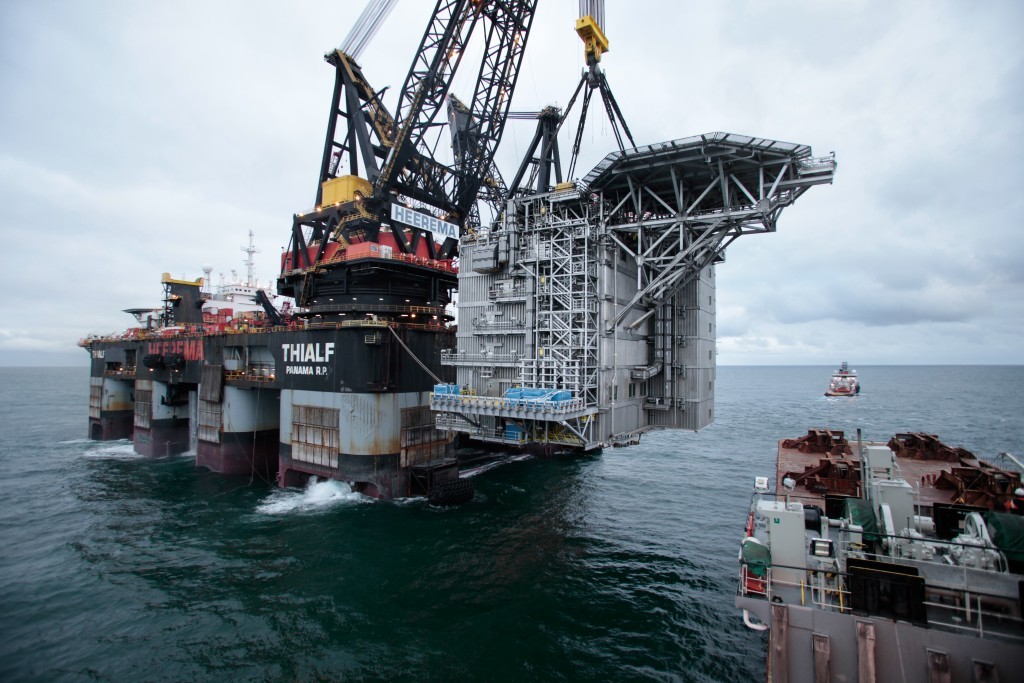
BP’s £4.5billion North Sea Clair Ridge project, which is expected to keep the UK producing oil beyond 2050, has taken a giant leap forward.
Three huge topside modules have been installed on the “quarters and utilities” (QU) platform following their long journey from a shipyard in South Korea.
They were safely lifted onto pre-installed jackets by the Heerema Thialf deepwater construction vessel.
BP and its project partners – ConocoPhillips, Chevron and Shell – aim to produce 640million barrels of oil over 40 years from the field.
Trevor Garlick, regional president for BP’s North Sea business, said: “The safe installation of these three topside modules is a fantastic achievement by the project team.
“In a challenging time for the industry, this project shows the potential of our basin and why it is so important that we work to ensure a competitive future business.”
BP said the hook-up and commissioning of the topside modules by contractor Amec Foster Wheeler created more than 600 jobs, including six electrical apprentices.
The Clair field – about 47 miles west of Shetland – was discovered in the late 1970s, but it was not until 2005 that it was brought onstream because of the field’s location and geological complexity.
Clair Ridge targets an area to the north and comprises two new bridge-linked platforms and pipeline infrastructure for the export of oil and gas to Sullom Voe in Shetland.
Production and drilling platform topside modules will go on next summer, with first oil expected in late 2017.
Output from Clair Ridge, which will be the first large-scale project using lower salt water to boost recovery, is expected to peak at up to 120,000 barrels of oil per day.
BP said about half of the Clair Ridge investment was being spent in the UK, with more than 80 British firms providing engineering design and support, hook-up and installation services, as well as manpower and a wide range of equipment.
Recommended for you
